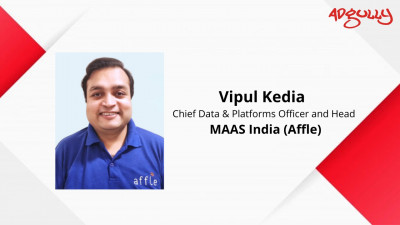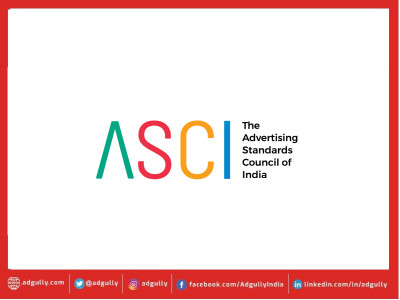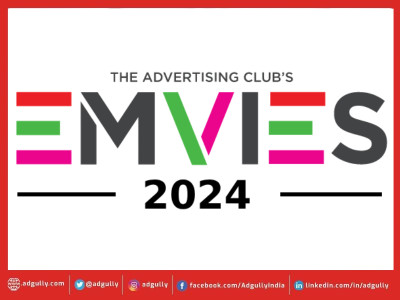Advertisers are increasingly customising localised ads for regional markets: Vipul Kedia
According to a Google KPMG report, 70% Indians find local language digital content more reliable. Furthermore, 88% Indian language internet users are more likely to respond to a digital advertisement in their local language as compared to English. Advertising in local languages is increasingly becoming an important part of any marketing plan and we expect the trend to grow as we go along.
In conversation with Adgully, Vipul Kedia, Chief Data & Platforms Officer and Head of MAAS India (Affle), speaks about the growth observed in vernacular advertising and ad spend, how rural shoppers are impacting ad strategies of brands, and much more.
What is the kind of growth that has been observed in advertising in local languages in India in 2021? What are the key drivers of this growth?
As more and more people come online in India, the percentage of consumers who consume digital content in local languages is increasing every day. The pandemic gave a huge impetus to the generation and consumption of local language content. Advertising mirrors the environment in which it is served and the share of ads being served on destinations that have non-English content is increasing. As a result, there are more opportunities to serve advertising in local languages, which more and more advertisers are latching on, in order to contextualize their ads, improve response rates and increase their reach among such audiences.
Vernacular and Video form important parts of Affle’s strategy and we power scalable opportunities for our advertisers to reach out to their target audience in local languages. Our consumer platform aims to be present across all consumer touchpoints, also focusing on gaining significant reach among audiences for whom English is not the language of choice. We have seen an increasing share of advertisers deploy local language creatives in their campaigns and this trend continues to grow.
What has been the impact on the AdTech space? How are advertisers aligning themselves to drive localised strategies?
This change is having a significant impact on the adtech industry. It has been said for long that India is not one single market, rather a combination of several micro markets. Local language advertising is a true manifestation of this. Consumers from different regions and different socio-economic backgrounds behave differently. Advertisers now have the opportunity to create and drive localized strategies. It obviously means that we need multiple creative sets for each language, but more importantly, it needs deeper data distillation and sharper targeting to be able to identify and target consumers based on their language preferences. We also need significantly higher efforts in getting the appropriate supply partnerships and creating more diverse media plans. During the campaign, there is additional data analysis and reporting complexity given the numerous sub-campaigns and creatives. The optimisation complexity also increases accordingly.
We have seen good results coming from local language creatives which cater to the local context, product preferences and user behavior. Affle’s mDMP platform uses the deep Machine Learning and Data Science technologies to ensure that we are able to derive language preferences of our users and provide appropriate targeting capabilities. We help our clients to define their local language advertising strategy and help them customize their creatives and communication accordingly. We have worked with some of the largest apps to drive their local language campaigns and acquire users who were hard to reach without such customisations and targeting.
What are the leading languages which are seeing the maximum growth and will soon catch the attention of marketers?
Till last year, Hindi dominated the share of local language use in advertising, followed by the four southern languages. Since then, we have seen advertisers looking to engage with consumers in the dominant languages spoken in the state (Gujarati, Bengali, Marathi, Punjabi, etc.) along with the prevalent dialects like Bhojpuri, Haryanvi, etc. These languages are being used both in video as well as display creatives. Advertisers are seeking sharper targeting to engage with the consumers in their language of choice and Affle’s platforms are constantly evolving to allow more such opportunities.
In terms of digital ad spends, what is the approximate vernacular ad spend growth that we can expect in the next 2-3 years?
We foresee continued rise in the vernacular market. The next 100 million shoppers in India are expected to come from an audience who will have vernacular affinity and may not be comfortable in English. Advertisers will have to reach out to them in the language of their choice in order to engage them. Thus, as we go deeper into the regional markets, the spend share of vernacular advertising will keep increasing.
Could you share some insights on the monetisable vernacular user base expected by 2023, as well as the overall growth rate? Which regional markets in India are showing increasing traction?
As India emerges as a mobile economy, there’s an immense growth in the rate of smartphone adoption and the level of internet penetration in remote locations leading to rapid increase in the user base of vernacular content as well as advertisements. This is a huge opportunity to cash upon for advertisers. Not just vernacular languages, several dialects are also getting an incremental user base. In addition, markets such as Gujarat, Bihar, Uttar Pradesh, Haryana are showing good traction from users.
Given that there are more products being launched to target such audiences, especially in verticals like Fintech, Edtech, eCommerce, etc., it will be imperative to use a differentiated strategy to reach out to these audiences in local languages in order to drive recommendations and conversions.
Do you see the number of vernacular affinity users in India from Tier 2 and Tier 3 rural shoppers overtaking the metro shoppers in the future? How are these rural shoppers going to impact ad strategies of brands?
As we all know, over 68% of the Indian population resides in the rural areas. In addition, according to the Internet and Mobile Association of India (IAMAI) & Kantar ‘ICUBE 2020’ report, digital adoption is swiftly increasing in rural India with a spurt in smartphone usage, as the total active internet population is likely to touch 900 million by 2025 from 622 million last year. Therefore, the share of users from rural areas combined with Tier 2 and 3 locations may outnumber the metro users in due course as more products and services target them. Furthermore, mobile literacy has also boosted the number of online consumers from the non-metro areas. Certain online brands which majorly cater to Tier 2 and 3 city users, have witnessed exceptional acceptance from their target audience. Advertisers are increasingly customising localised ads for regional markets, because one message-one language might not fit in to all users.
















Share
Facebook
YouTube
Tweet
Twitter
LinkedIn